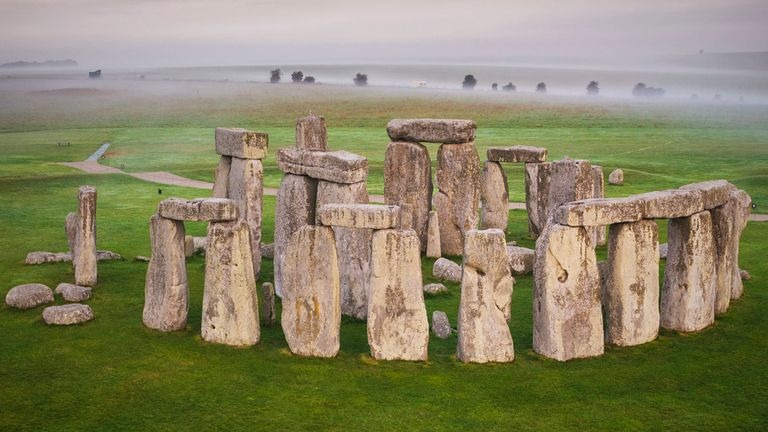
Year-round stone tourism replaces solstice exclusivity. Joining a Cornish moor stone hunt
On Cornwall’s Penwith Moors, time distorts. The landscape, tangled with bracken and gorse, hints at summer’s arrival with a golden hue. A distant cloud smudges the horizon, while the wind whispers like white noise, disorienting and low. The terrain tells tales of farms overlaying ruins of mines and prehistoric settlements. And at its core lie scattered ancient stones—enigmatic quoits, barrows, and stone circles that have fascinated and puzzled civilizations for ages.
On Cornwall’s Penwith Moors, time distorts. The landscape, tangled with bracken and gorse, hints at summer’s arrival with a golden hue. A distant cloud smudges the horizon, while the wind whispers like white noise, disorienting and low. The terrain tells tales of farms overlaying ruins of mines and prehistoric settlements. And at its core lie scattered ancient stones—enigmatic quoits, barrows, and stone circles that have fascinated and puzzled civilizations for ages
The couple, pioneers of a stone enthusiast community, embrace exhilarating stone excursions. Starting in 2021 with a laptop and badge-maker in their Penryn living room, their endeavor has grown into a network of nearly 3,000 members. While the duo organizes impromptu walks and events, the Stone Club primarily serves as a platform for stone aficionados across the nation to exchange tips and tales about their beloved formations (with over 1,000 stone circles in Britain, the possibilities are abundant). Members, spanning ages from two to 80, offer guidance on intriguing routes, whether waterproof boots are necessary, and where to find the nearest watering hole or countryside tavern. The club also acts as an informal identification service, where faded Polaroids from past adventures are retrieved from attic boxes and shared on social media for fellow members to decipher the stone’s location.
MacBeth notes that interest in stone exploration surged during lockdowns and continues to flourish. People yearned to venture outdoors, learn about their surroundings, and take pride in their landscapes. Many discovered a newfound sense of community and belonging.
The curated route provided by the Stone Club today guides us past five significant landmarks. Shaw explains that linking these sites offers a contemplative experience of the evolving landscape and weather. As we navigate a path pockmarked with puddles, we arrive at Mên-an-Tol, a cluster of four standing stones, one of which is hollowed out in the form of a wide granite ring. Locally known as Crick Stone, it has become a magnet for folklore, attracting visitors with its reputed healing powers. According to legend, passing a baby through the stone three times can cure rickets, while a woman struggling to conceive should pass through it seven times under the light of the full moon. We share this rumor with a man observing his teenage daughter giggling as she walks backward through the stone. He curtly tells her, “Once is enough.
Continuing our journey along the path, we eventually arrive at Ding Dong Mine, one of numerous dilapidated engine houses that dot the Cornish landscape, serving as remnants of its faded prosperity. Shaw reveals that this particular mine was favored by the renowned writer Daphne du Maurier, who held a deep appreciation for Cornish heritage. “This is the unseen Cornwall for many,” MacBeth remarks, “a landscape scarred by mining, extending beyond the popular beaches of St Ives.” As each summer season passes and Cornwall becomes increasingly refined, stone exploration remains a precious free activity, only requiring funds for transportation, such as petrol or bus fare, according to MacBeth. Before moving forward, we peer once more into the abyss of the mine shaft, hoping to glimpse the ghostly silhouettes of its historical inhabitants.
Shortly after, we arrive at Bosiliack Barrow, a jumble of stones believed to be a Neolithic tomb, perhaps serving as a gateway to a distant realm. Initially, their arrangement may seem haphazard, but I learn that each slab was intentionally positioned to align with the winter sun. On the shortest day of the year, these stones become illuminated, radiating with the brilliance of solstice light. It was within this very location that the concept for the Stone Club was conceived, a place that continues to embody much of its ethos. “History cannot be confined to a linear textbook,” MacBeth remarks. “There will always be peculiarities.”
The formation of the club occurred at a crucial juncture in 2021, a time when political divisions ruptured society. However, stones transcend these tensions. They possess an age so profound that they become ultimately unknowable. They allow room for diverse interpretations, and embarking on a stone hunt adds an extra dimension to exploring the countryside. True to form, as we prepare to depart, it feels as though the sky’s lid is lifted, and the sun triumphantly breaks through the clouds.



